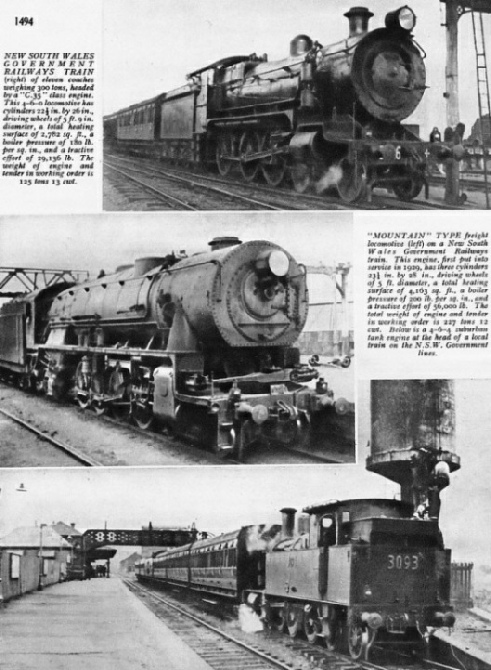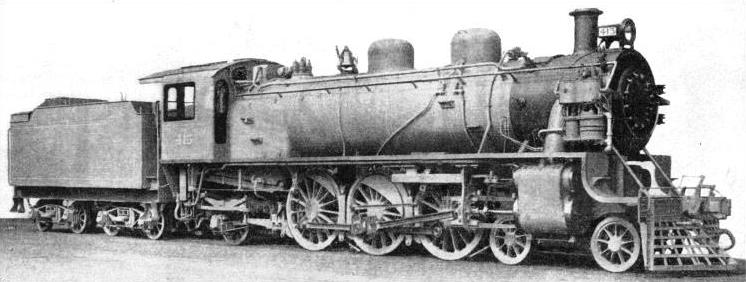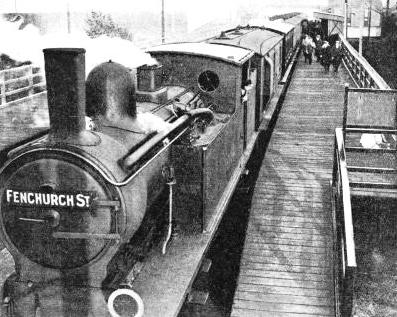
© Railway Wonders of the World 2012-


Part 47


Part 47 of Railway Wonders of the World was published on Friday 20th December 1935.
This issue contained a photogravure supplement on Australian Engines, which formed a photo-feature within this issue. The supplement appeared on pages 1491 -1494.
The Cover
This week’s cover shows an LNER royal train from Wolferton (Norfolk) to King’s Cross headed by a 4-4-0 express passenger locomotive of the “Claud Hamilton” class of the Great Eastern section.
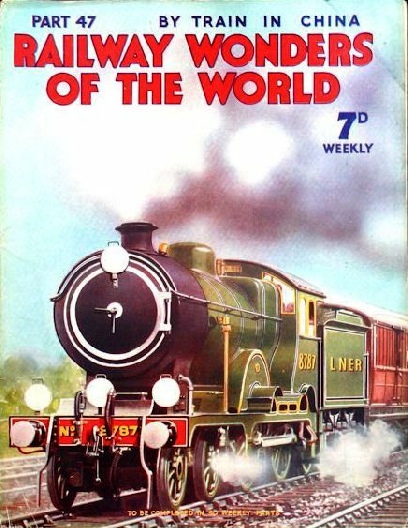
Spain and Portugal (Part 2)
The railways of Spain and Portugal, concluded from part 46.
(Pages 1477-1480 )
Ponte Eiffel Bridge, Across the River Lima
ACROSS THE RIVER LIMA. An important railway bridge which carries a section of the main lines of the Portuguese Railways near the town of Vianna do Castello. There are railway links with Spain on the north, north-east, and east of Portugal.
(Page 1478)
Travelling by Train in China
The first railway in China was torn up a year after it had been laid, as the natives considered it an ill omen. To-day the Chinese national railways alone operate some 4,280 miles of standard gauge and about 150 miles of metre-gauge railways. Among these national lines is the Canton-Hankow Railway, begun as far back as 1904, and scheduled for completion in 1936. The opening of this railway as a through route will constitute a big step forward from the political as well as from the economic standpoint,m for it will mean that the central portion of China will be in more direct touch with canton, the great southern metropolis. In china, as elsewhere, railways signify unification and national development. Much of the information in this chapter has been acquired by the kind assistance of the Chinese authorities. The railways of China have had a chequered history, and the obstacles encountered by the engineers and administrators have been many and varied; they include both the expected and the unexpected. An instance of the difficulties to be faced in China is provided by the Yellow River Bridge. This bridge, 1 mile 1,531 yards long, was specially constructed on “screw” piles so that if the river should suddenly change its course, the great bridge might be dismantled and re-erected over the truant waters. Though the laying of the railways in the plains has involved a constant battle against the floods, there are also sections of the line which have had to be laid through mountainous territory. On the Cheng-Tai line, for instance, running due east from the Peking-Hankow railway. Nineteen tunnels were bored in a comparatively short distance. You can read more on Chinese railways in Frederick Talbot's Railway Wonders of the World (1913), and in a further chapter on the Peking-Kalgan railway .
(Pages 1495-1504 )
”Pacific” Type Locomotive
“PACIFIC” TYPE LOCOMOTIVE built for the Tientsin-Pukow Railway. The leading dimensions of this British-built engine are: cylinders 20 in by 28 in, diameter of coupled wheels 5 ft 9 in, boiler pressure 200 lb per sq in, tractive effort 24,350 lb, and total heating surface, including superheater,
2,390 sq ft. The total weight of engine and tender is 147 tons 18 cwt.
(Page 1499)
Industrial Railways - 2 (Part 1)
This chapter deals first with the Port of London Authority Railways, which serve the needs of one of the world’s greatest ports, and have a track mileage of nearly one hundred and forty. The system links up the main lines with practically all the London docks, and plays an essential part in the commercial life of the country. Nor is the railway solely for the transport of goods; 900,000 passengers are annually carried on the railway, as is explained in this chapter. Another railway, still less familiar to the public, is the remarkable private system at the brewery of Messrs Arthur Guinness, Son & Co. Ltd., at St James’s Gate, Dublin. The Guinness Railway has two peculiar features; the tracks are both broad and narrow gauge and the area within which the line is laid occupies three different levels. This railway and the rolling stock employed are fully described. The article is concluded in part 48. It forms a sequel to the the first, which appeared in part 32.
(Pages 1505-1508 )
A Gallions-Fenchurch Street Train
900,000 PASSENGERS
are carried annually over the lines of the Port of London Authority Railways. The system has direct communication with the LNER and LMS Railways. This illustration shows a Gallions - Fenchurch Street train.
(Page 1506)
Mixed Traffic Locomotives
In the year 1934 the freight mileage in Great Britain amounted to over 128,000,000. These huge figures give some idea of the vastness of the freight traffic in Great Britain, and also of the vast importance of the locomotives which covered that mileage. This chapter describes British goods and mixed traffic engines. Freight train operation in Great Britain has grown up on the basis of small consignments and frequent service, and this explains the preference for trains not exceeding some sixty or seventy wagons in length and 1,000 or 1,200 tons in weight. Though trains of this size do not demand locomotives with unusual tractive force, many interesting types of freight engine are to be found on British lines, such as Nos. 2393 and 2394 of the LNER, which have a tractive effort of 38,500 lb, increased in the instance of No. 2393 to 47,000 lb by a booster. This chapter includes descriptions of the modern tank engines employed on the lines of the four main British companies, and contains a table giving the main dimensions of representative mixed traffic, freight, and tank locomotives in Great Britain. The table is reproduced below.
(Pages 1483-1490 )
Australian Engines
(Top) MODERN PRACTICE is typified by the “Garratt” locomotive at the head of a goods train at Plavins Siding, Dwarda line, in the south-west timber district of Western Australia.
(Middle) A 4-6-0 passenger locomotive of the “C.36” class of the New South Wales Government Railways. This locomotive, put into service in 1925, has cylinders 23 in by 26 in, driving wheels of
5 ft 9 in diameter, a total heating service of 2,640 sq ft, a boiler pressure of 180 lb per sq in, and a tractive effort of 30,500 lb. Engine and tender, in working order, weigh 159 tons.
(Bottom) A Kalgoorlie-Perth express at Midland Junction Station, headed by a 4-6-2 passenger locomotive of the type standard on the Western Australian Lines.
(Page 1491)
Trains Stopped by Gales
A two-page photo-feature.
AN UNUSUAL PRECAUTION. Staithes Viaduct, in the North Riding of Yorkshire, carries the Loftus-Whitby branch of the LNER across the Staithes Beck on the Yorkshire coast, near Whitby. A wind-pressure gauge, or anemometer, has been fitted on the viaduct to warn the operator in Staithes signal cabin should the wind-pressure on the viaduct be too great to allow trains to cross over the structure in safety. This precaution is necessary as the viaduct is exposed to the full force of North Sea gales. The anemometer, first installed in 1884, consists of a circular shield and wind vanes; if the wind reaches a pressure of 28 lb per
sq ft the instrument rings a bell in Staithes signal box, and the ringing continues until the pressure drops. The warning bell, however, has rarely been rung.”
(Page 1481)
4-6-0 Engine at Cambridge
4-6-0 MIXED TRAFFIC ENGINE at Cambridge, LNER, hauling one of the special “tourist trains” introduced a short time ago for excursion traffic. Cars are painted green and white. Engines of this type were built by the Great Central Railway for secondary passenger and express freight service.
(Page 1483)
Australian Engines - 3
(Top) New South Wales Government Railways train of eleven coaches weighing 300 tons, headed by a “C.35” class engine. This 4-6-0 locomotive has cylinders 22½ in by 26 in, driving wheels of 5 ft 9 in diameter, a total heating surface of 2,782 sq ft, a boiler pressure of 180 lb per sq in, and a tractive effort of 23,196 lb. The weight of engine and tender in working order is 125 tons 13 cwt.
(Middle) “Mountain” type freight locomotive on a New South Wales Government Railways train. This engine, first put into service in 1929, has three cylinders 23 ¼in by 28 in, driving wheels of 5 ft diameter, a total heating surface of 4,163 sq ft, a boiler pressure of 200 lb per sq in, and a tractive effort of 56,000 lb. The total weight of engine and tender in working order is 227 tons 12 cwt.
(Bottom) A 4-6-4 suburban tank engine at the head of a local train on the New South Wales Government lines.
Contents of Part 47
Spain and Portugal (Part 2)
Trains Stopped by Gales
Mixed Traffic Locomotives
Australian Engines (photogravure supplement)
Travelling by Train in China
Industrial Railways -2 (Part 1)
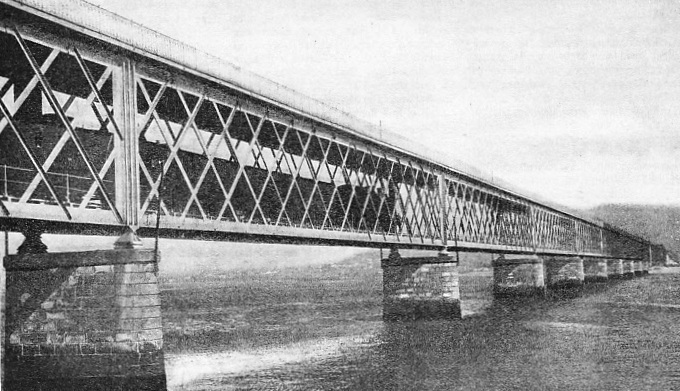
Rocio Terminus, Lisbon
Rocio Terminus in Lisbon, the focal point of the Portuguese Railways, is the central station for the Northern, Western, and Cintra Lines. There are two other stations serving the Southern and South-Eastern Lines and Cascaes. This photograph shows the striking entrance to the Rocio Terminus.
(Page 1479)
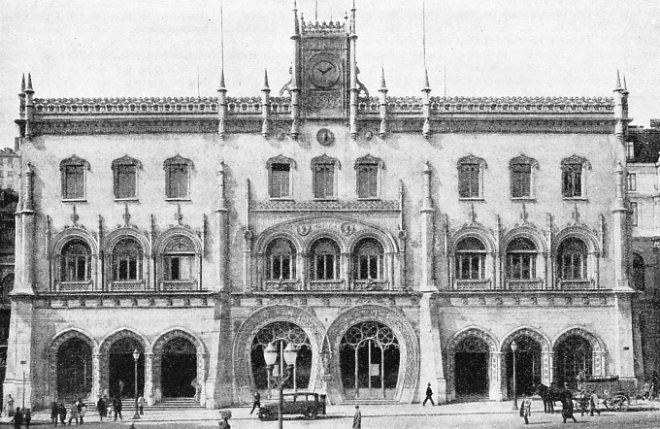
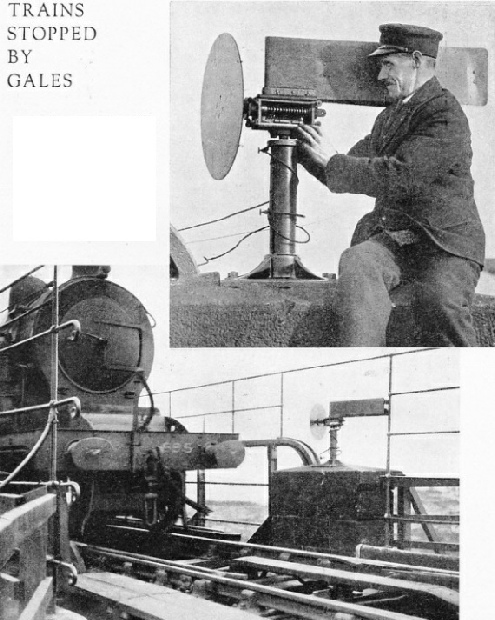
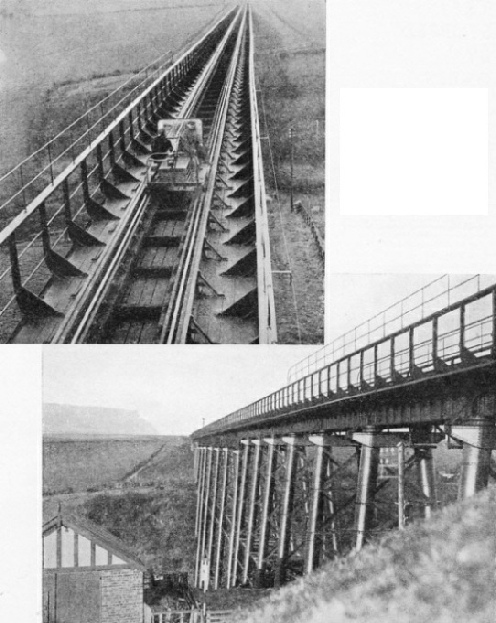
Trains Stopped by Gales - 2
STAITHES VIADUCT is 770 ft in length and stands 152 ft above the bed of the beck. It is divided into seventeen spans, some of which are 60 ft and some 30 ft. As completed in 1875, each of the piers consisted of two tubular columns of plate iron filled with cement and braced together at intervals. In 1883 the piers were all connected by means of longitudinal bracing to increase the strength of the viaduct, Staithes Station is ten a a quarter miles north-west of Whitby (West Cliff). The branch line runs along the Yorkshire coast from Whitby via Staithes, Loftus, and Brotton to Middlesbrough, the total distance being thirty-six and a half miles. South of Whitby the line continues along the coast to Scarborough, twenty-one and a half miles from Whitby.
(Page 1482)
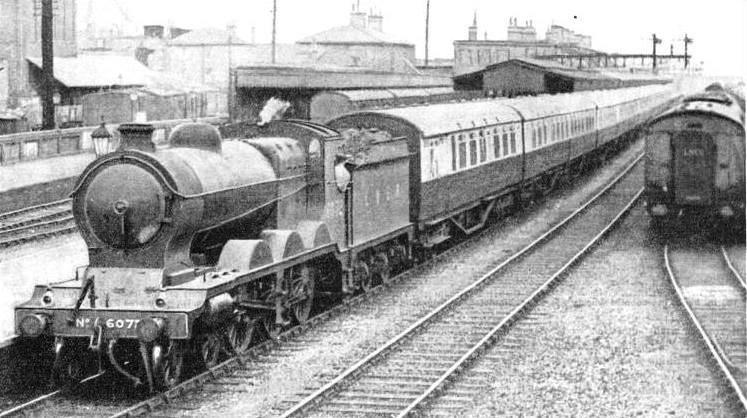
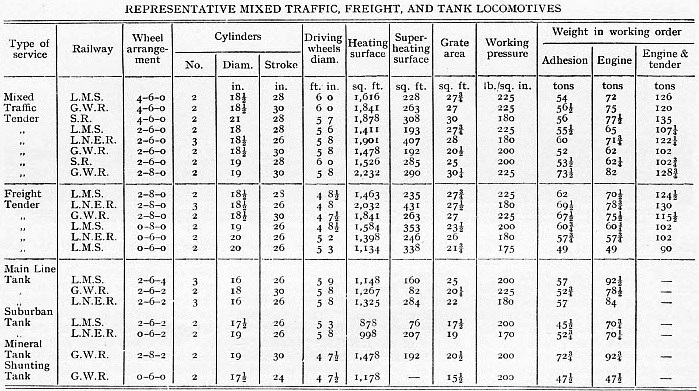
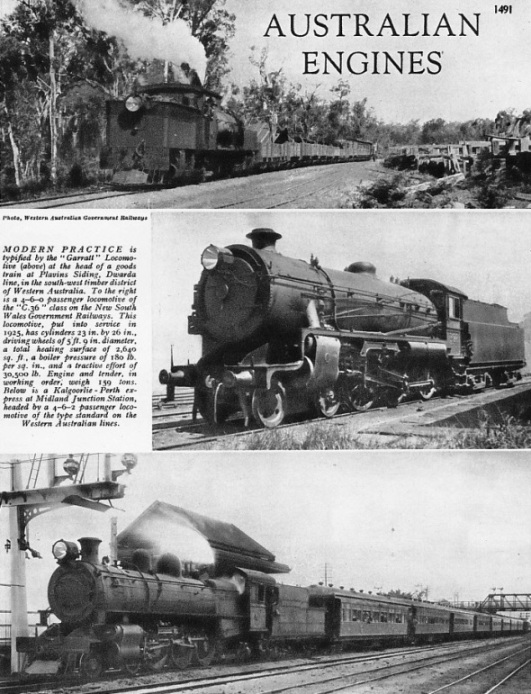
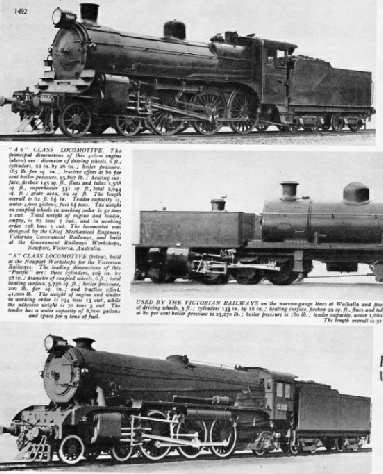
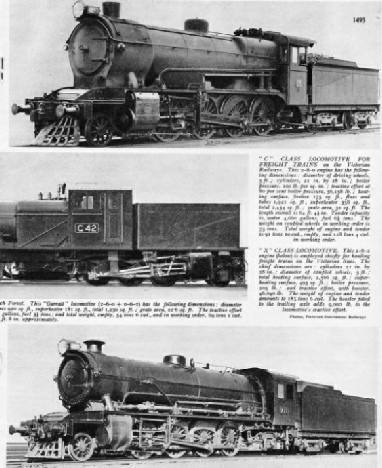
Australian Engines - 2
(Top left) A2 CLASS LOCOMOTIVE. The principal dimensions of this 4-6-0 engine are: diameter of driving wheels, 6 ft; cylinders, 22 in by 26 in; boiler pressure, 185 lb per sq in; tractive effort at 80 per cent boiler pressure, 25, 867 lb; heating surface, firebox 145 sq ft, flues and tubes 1,568 sq ft, superheater 331 sq ft, total 2,044 sq ft; grate area, 29 sq ft. The length overall is 62 ft 6½ in. Tender capacity is water 4,600 gallons, fuel 6½ tons. The weight on coupled wheels in working order is 52 tons 2 cwt. Total weight of engine and tender, empty, is 85 tons 7 cwt, and in working order 118 tons 2 cwt. The locomotive was designed by the Chief Mechanical Engineer, Victorian Government Railways, and built at the Government Railway Workshops, Newport, Victoria, Australia.
(Bottom left) “S” CLASS LOCOMOTIVE built at the Newport Workshops for the Victorian Railways. The leading dimensions of this “Pacific” are: three cylinders, 20½ in by 28 in; diameter of coupled wheels, 6 ft; total heating surface, 3,736 sq ft; boiler pressure, 200 lb per sq in; and tractive effort, 41,000 lb. The weight of engine and tender in working order is 194 tons 13 cwt, while the adhesive weight is 70 tons 5 cwt. The tender has a water capacity of 8,600 gallons and space for 9 tons of fuel.
(Centre) USED BY THE VICTORIAN RAILWAYS on the narrow-gauge lines at Walhalla and Beech Forest. This “Garratt” locomotive (2-6-0+0-6-2) has the following dimensions: diameter of driving wheels, 3 ft; cylinders 13¼ in by 18 in; heating surface, firebox 99 sq ft, flues and tubes 950 sq ft, superheater 181 sq ft, total 1,230 sq ft; grate area, 22.6 sq ft. The tractive effort at 80 per cent boiler pressure is 25,270 lb; boiler pressure is 180 lb; tender capacity, water 1,680 gallons, fuel 3½ tons; and total weight, empty, 54 tons 6 cwt, and in working order, 69 tons 1 cwt. The length overall is 51 ft 8 in approximately.
(Top right) “C” CLASS LOCOMOTIVE FOR FREIGHT TRAINS on the Victorian Railways. This 2-8-0 engine has the following dimensions: diameter of driving wheels, 5 ft; cylinders 22 in by 28 in; boiler pressure 200 lb per sq in; tractive effort at 80 per cent boiler pressure, 36,138 lb; heating surface, firebox 175 sq ft, flues and tubes 1,921 sq ft, superheater 338 sq ft, total 2,434 sq ft; grate area, 32 sq ft. The length overall is 64 ft 4½ in. Tender capacity is, water 4,660 gallons, fuel 6½ tons. The weight on coupled wheels in working order is 73 tons. Total weight of engine and tender is 91 tons 10 cwt empty, and 128 tons 4 cwt in working order.
(Bottom right) “X” CLASS LOCOMOTIVE. This 2-8-2 engine is employed chiefly for hauling freight trains on the Victorian lines. The chief dimensions are: cylinders 22 in by 28 in; diameter of coupled wheels, 5 ft; total heating surface, 2,566 sq ft; superheating surface, 493 sq ft; boiler pressure 205 lb ; and tractive effort, with booster, 46,040 lb. The weight of engine and tender amounts to 185 tons 6 cwt. The booster fitted to the trailing axle adds 9,000 lb to the locomotive’s tractive effort.
(Pages 1492-1493 )
